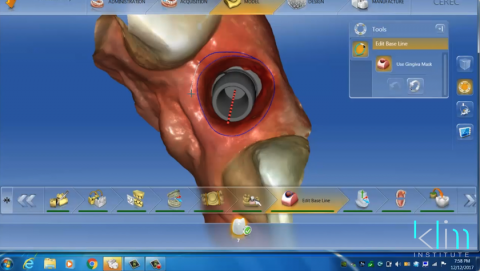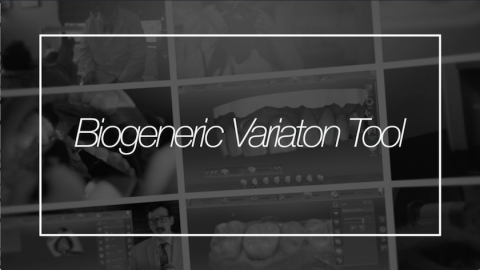Finally found a need for the Adjust Morphology feature and create a 3rd premolar rather than molar. This feature is handy when there is not enough room for a molar morphological design due to mesial drift of distal tooth, a molar in this case, into the mesial edentulous zone. This video tutorial will also be a unique demonstration for designing two side-by-side implants. In this case Implant Direct Inactive 3.7 and 4.3 implants where placed using the "crown-down" technique and placed with a guide. Virtually planned and guided implant placement can take a difficult implant and restorative situation and provide a very
- Message Center
- Message Center
Submitted by James Klim DDS, CADStar host on 04/03/2018 - 10:24pm
Submitted by James Klim DDS, CADStar host on 03/31/2018 - 10:28pm
Are we able to machine thin feather margins with CEREC without chipping? Oh yes, we can! In fact, I am going to make a quality statement. We can mill a "pressable" margin with the MC XL using the EF bur system. This video will review the clinical criteria for applying a thin margin to optimize the aesthetic results. View Video
Submitted by James Klim DDS, CADStar host on 03/13/2018 - 6:47am
It is so important to completely listen to our patients when they talk. This video case review documents how the patient was right and I was wrong after 30 years. Thanks to chairside CAD/CAM and multi-Empress, I was finally able to get it right. Incisal Variation Tool featured in the video. View Video
Submitted by James Klim DDS, CADStar host on 02/07/2018 - 6:56am
This video is my quadrant design strategy when preparing three posterior teeth including the distal occlusal stop (usually second molar). The current version of the CEREC software is performing well. When designing multiple teeth, setting the proximal contacts size and alignment to the occlusal plane will expedite the design process and final restorative outcome. Link to Video
Submitted by James Klim DDS, CADStar host on 01/10/2018 - 10:41am
View the videos in this educational series—complete the CE questionnaire following the last video and you will then be promted to download your AGD verifications credit. Enjoy this series about tool efficiency. View Course
Submitted by James Klim DDS, CADStar host on 12/17/2017 - 9:45pm
Bite registration strategy for preserving temporomandibular joint position when preparing a full quadrant including the second molar. View Video
Submitted by James Klim DDS, CADStar host on 12/13/2017 - 10:58am
Case Reviews are provide for those cases uploaded to the Ask Dr. Klim Forum. This case is a review and demonstrates the principles about soft tissue implant emergence for anterior implant (thin tissue biotype). View Video
Submitted by James Klim DDS, CADStar host on 12/11/2017 - 10:43pm
With the current version of the CEREC software, the most effective scanning sequence for implant applications is scan the quadrant with or without the healing collar in the Quadrant catalogue for the particular arch being treated. The Scanbody catalogue is now used to capture the ScanPost scan. No copying the catalogue over and cutout feature for the ScanPost. Just a new Scanbody catalogue. Very smooth process and has expedited the scanning process. View Video
Submitted by James Klim DDS, CADStar host on 11/26/2017 - 9:13am
Biogeneric Variation is the first tool I use in my posterior design steps. I call it my “Secret Design Weapon” . The scaled alterations provide morphological “fingerprinting” for both posterior and anterior virtual design alternatives. If you have not used this tool yet, try it. It is profound! View Video
Submitted by James Klim DDS, CADStar host on 11/19/2017 - 5:49pm
IPS Ivocolor is a universal stains and glaze assortment for the individualized staining and characterization of ceramic materials. The range of products has been coordinated with the layering, press and CAD ceramics from Ivoclar Vivadent and the zirconium oxides from Wieland Dental and can be used regardless of the CTE of the ceramic. Due to the optimized sinter temperature of the newly developed glass, optimum esthetic results can be achieved irrespective of the ceramic substrate.
The newly developed composition of the pastes was optimized with regard to the application behaviour and the firing results. The gel-type structure of










